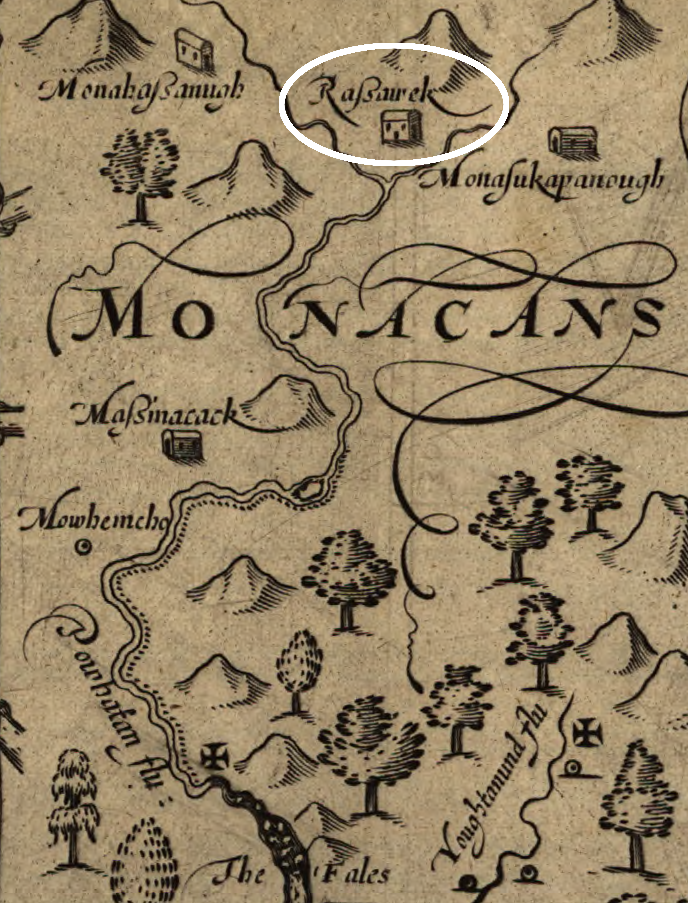
John Smith recorded the existence of five Monacan towns, including the capital Rassawek
Source: Library of Congress, Virginia (by John Smith, 1624)

John Smith recorded the existence of five Monacan towns, including the capital Rassawek
Source: Library of Congress, Virginia (by John Smith, 1624)
John Smith recorded five towns of the Monacan confederacy, including its capital Rassawek. It was a palisaded town located at the mouth of what the English named the Rivanna River after their Queen Anne.
John Lederer traveled through territory of the Monacan in 1670-71. By that time, the war parties of Cherokee/Catawba and Iroquois had disrupted the Monacan settlements and reduced the population, but Rassawek was still occupied. Lederer recorded it as Mahock.
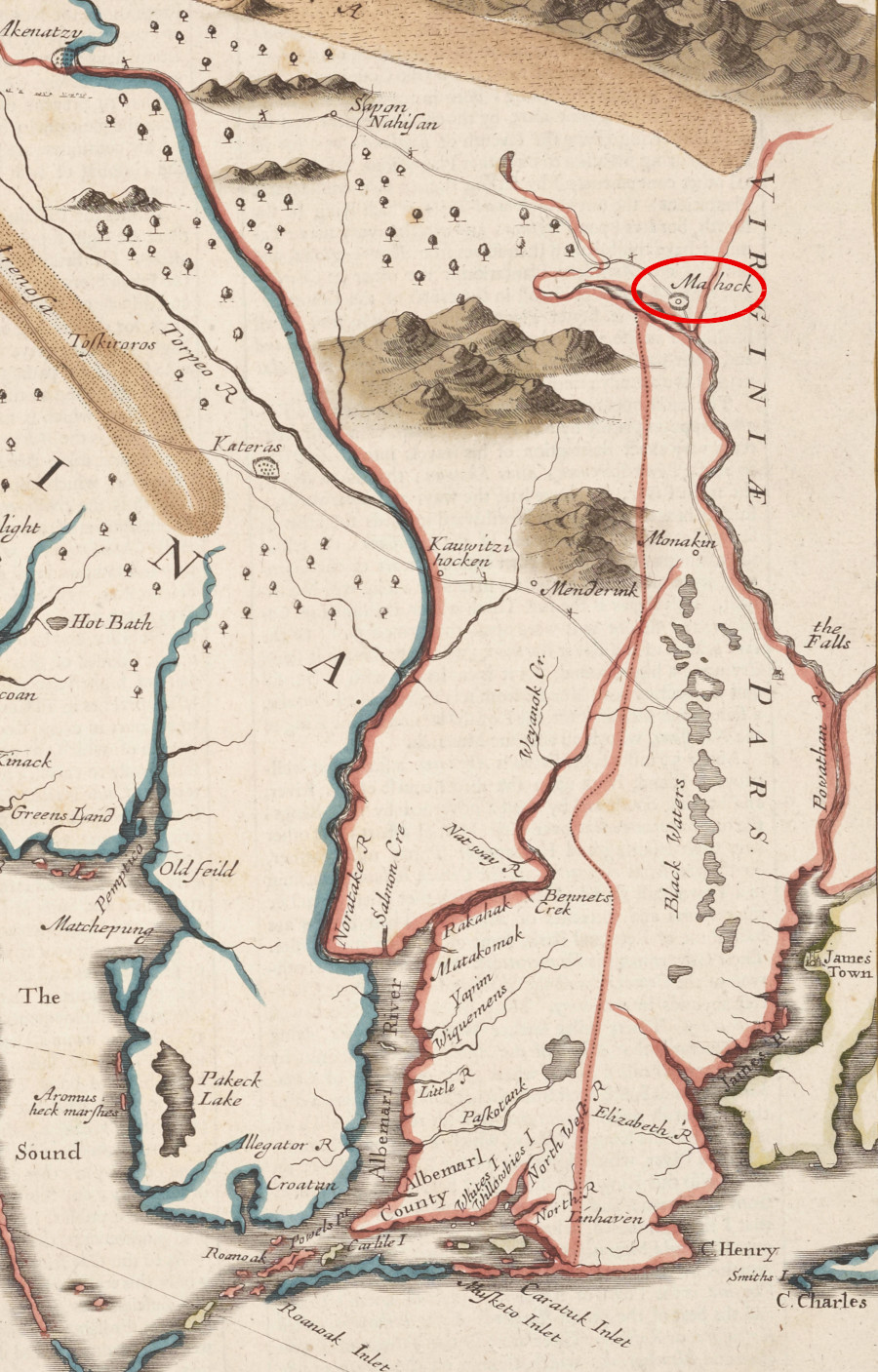
John Lederer documented Monacan living at Mahock (Rassawek) in 1670-71 (NOTE: north is to the right)
Source: North Carolina Maps, A New Description of Carolina (by John Speed, 1676)
Colonists later named the site "Point of Fork." People travelling upstream by boat could veer right onto the Rivanna, or take the left fork. The left fork was originally named the Fluvanna River, but later the larger fork became simply part of the James River. It was named after King James I by the first English colonists who arrived in 1607.
Downstream, the Algonquian-speaking tribes under Paramount chief Powhatan had called it Powhatan's River before the colonists arrived. The Siouan-speaking Monacan in the Piedmont would not have used the name of their rival on the Coastal Plain. Whatever river names were used by the Monacan are not used on any modern maps.1
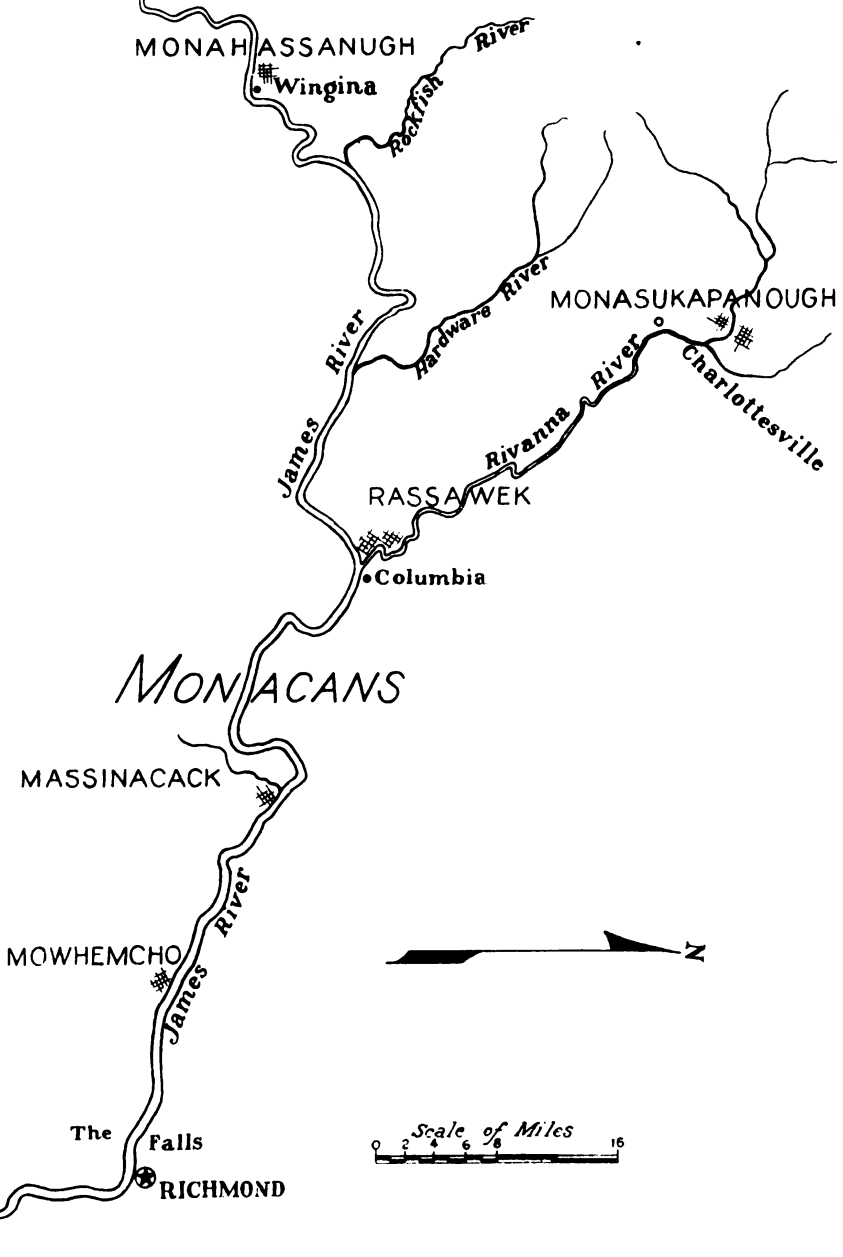
Rassawek and the other four Monacan towns recorded by John Smith were all in the James River watershed
Source: The Five Monacan Towns in Virginia, 1607 (by David I. Bushnell Jr., 1930)
Much of the Monacan heritage has been lost; the culture of the colonial settlers has replaced place names and much, much more. Point of Fork was recognized as the historic site of a Revolutionary War skirmish where British forces destroyed a Continental Army supply depot in 1781, rather than as the site of a major Monacan town.
In 2019, the remnants of Rassawek were threatened with destruction.
In 2009, Fluvanna and Louisa counties created the James River Water Authority (JRWA) and planned a water pipeline from the James River to Zion's Crossroads. Commercial development there was expected to increase tax revenue for the two counties substantially. Zion's Crossroads lacked sufficient water supplies, but was the most attractive location because the crossroads was at the intersection of US 15 and US 250/I-64.
The authority decided to build a water pump station at "Point of Fork" next to the former town of Columbia. It bought the property there in July 2016. Part of the process to obtain a US Army Corps of Engineers permit for the construction in the navigable James River is the Section 106 process, requiring assessment of the impacts on historic and cultural resources. The Monacan were contacted in May, 2017. The authority offered to conduct archeological studies before excavating the four-acre site for the pump station, to facilitate reburial if any graves were discovered, and to make a donation to the Monacan Ancestral Museum.2
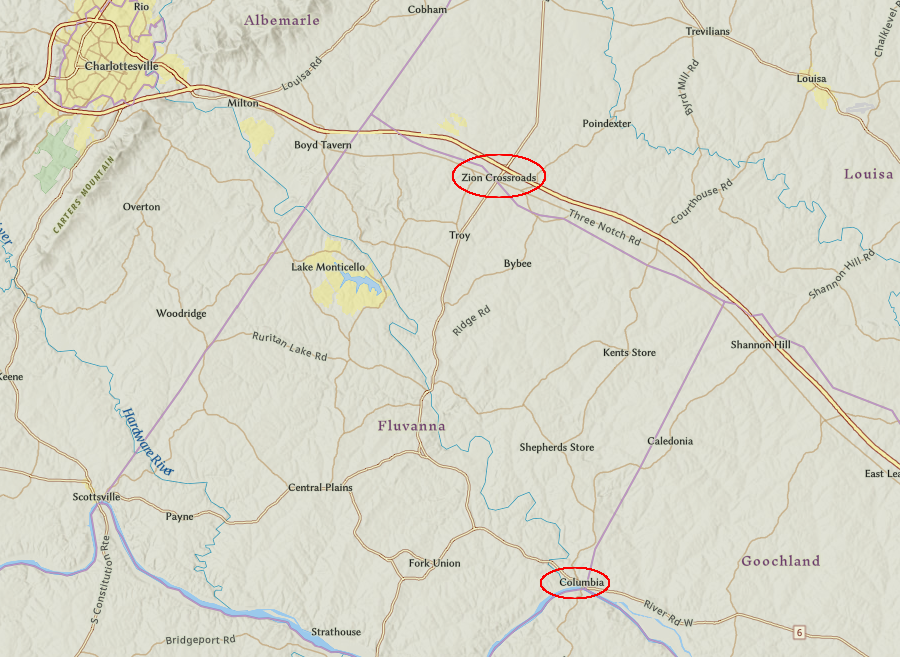
the pump station at Point of Fork would provide water for development at Zion's Crossroads
Source: ESRI, ArcGIS Online
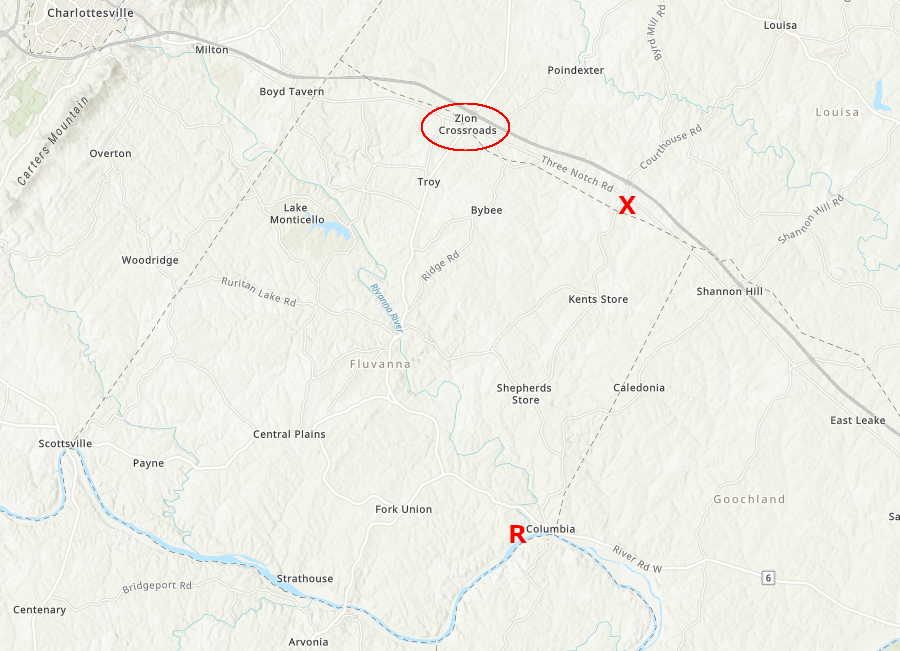
the pump station at Rassawek (R) was expected to pump water to a treatment plant at Ferncliff (X), which would send drinking water to Zion's Crossroads
Source: ESRI, ArcGIS Online
The US Army Corps of Engineers must issue a permit for the pump station. That required a consultation process under Section 106 of the National Historic Preservation Act, to consider how to mitigate the impacts on Rassawek. The tribe encouraged the Virginia Department of Historic Resources to consult with the three North Carolina tribes that also share Eastern Siouan background, because the Sappony Tribe, the Occaneechi Band of the Saponi Nation, and the Haliwa-Saponi Indian Tribe also had an ancestral affiliation with the site of Rassawek.
The Monacan Nation initially focused on negotiating how the impacts of constructing the new pump station could be mitigated. Once the tribe learned that the James River Water Authority had identified alternative locations for the project, it flatly opposed construction at the Point of Fork location because:3
The tribe noted that all Monacan towns had sent their tribute to Rassawek, and it once had a longhouse of sixty feet with at least a dozen roundhouses. Earliest occupation was over 5,000 years ago, "about 200 generations before John Smith", and the planned approach to archeological excavation was viewed as inadequate.
The proposal to excavate burials and transfer artifacts to a museum did not ensure they would go to the Monacan Nation. The tribe estimated it would cost over $300,000 for reburial of skeletons and perpetual maintenance of a new site, and disturbance of graves was not desired:4
The James River Water Authority had not anticipated the Monacan objections. It had already acquired right-of-way and built a water treatment plant at Ferncliff, in Louisa County between the Fluvanna County line and I-64. If the Corps of Engineers determined that the authority must use an alternative location for its James River pump station, then up to 10 miles of additional pipeline would have to be constructed.5
In September 2019, the James River Water Authority (JRWA) was notified that must submit a new application for the project. The Corps determined that the project should not be approved under the Nationwide Permit 12 application that had ben submitted; instead, a more-detailed individual (standard) permit was required to obtain more comprehensive public interest review. More significantly, the Virginia Department of Historic Resources determined that the archeological consultant hired for the project was not qualified, and a new report on the site's ancient history had to be prepared.
The water authority contested those conclusions, while the attorney for the Monacan responded:6
The lawyer representing the Monacan claimed that the James River Water Authority had chosen an unqualified contractor and deliberately damaged the historic site. If the Corps of Engineers concurred, then "anticipatory demolition" in violation of the National Historic Preservation Act would prevent issuance of a Federal permit for the pump station.7
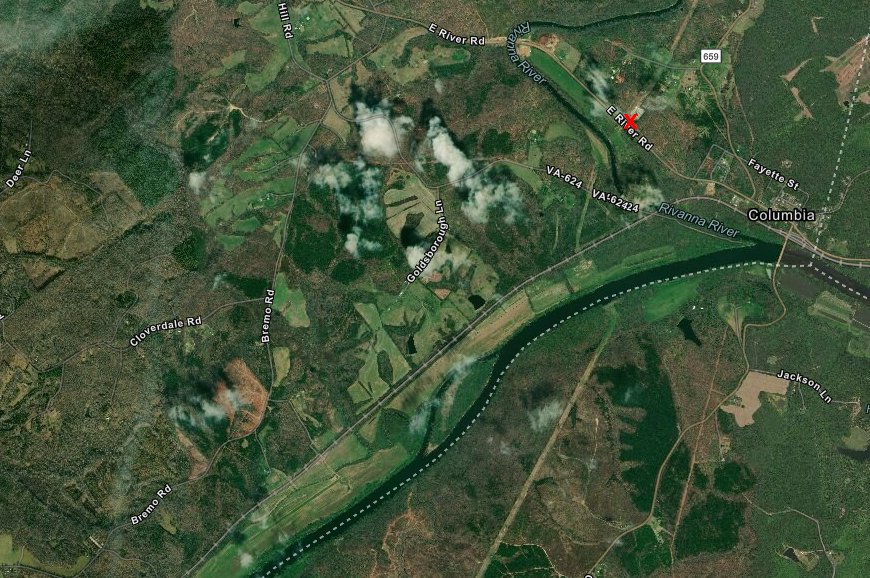
the Forsyth Alternative proposed by the Monacan would intercept (red X) the planned pipeline just west of Columbia
Source: ESRI, ArcGIS Online
The approval process was complicated further in October, 2019. An employee of the firm hired to prepare cultural resources management documentation for the James River Water Authority to obtain state and Federal permits became a whistleblower. He alleged the firm had altered his resume without his knowledge to make him appear to be more qualified, and:8
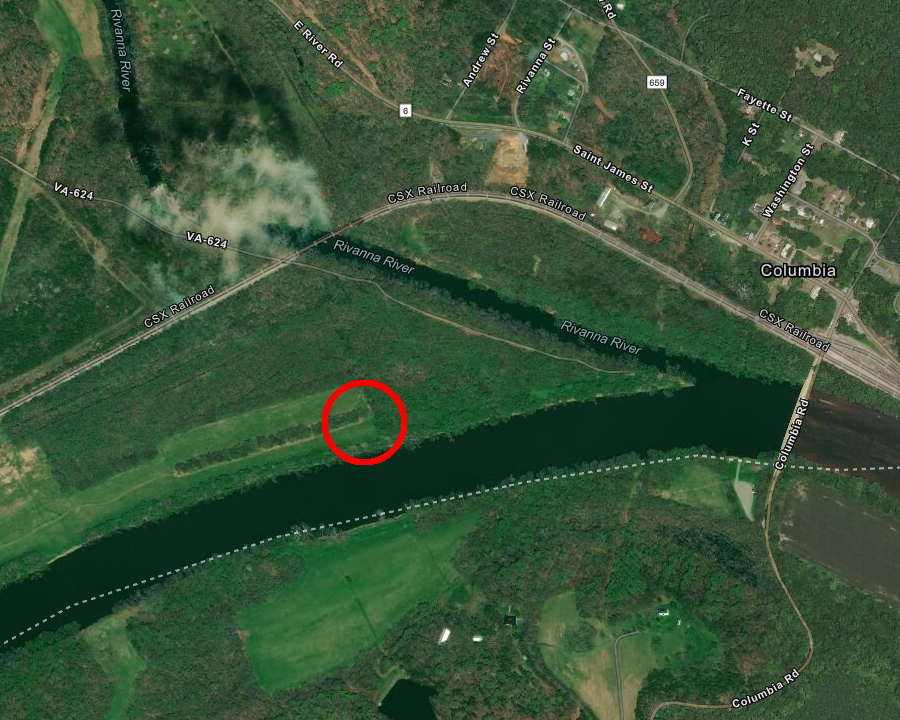
the James River Water Authority (JRWA) proposed to construct a pump station at the site of the Monacan capital, Rassawek
Source: ESRI, ArcGIS Online
In February 2020 the James River Water Authority reported on its assessment of six alternatives to the proposed site for a pump station, 12 alternative water line routes, and 5 alternative water sources. It concluded that eight feasible alternatives were cost-prohibitive. An attorney for the authority also quested if the identified site of Rassawek was accurate. He suggested it could have been at Elk Island, several miles downstream, or further up the Rivanna River.9
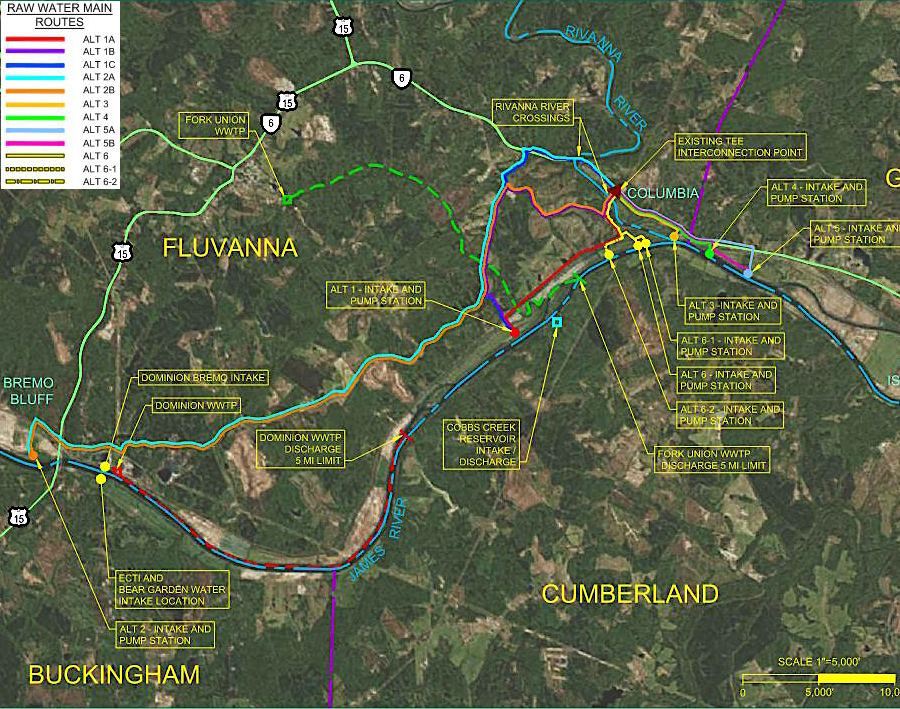
the James River Water Authority (JRWA) concluded in 2020 that eight feasible alternatives were cost-prohibitive
Source: James River Water Authority, Individual USACE Permit Supplemental Information and Alternative Analysis (February 2020)
The Monacan responded with the "Forsyth Alternative" in March, 2020 They negotiated with a nearby landowner to allow access to the river upstream of the James River Water Authority's preferred site for the pumping station. However, the James River Water Authority still decided to request approval from the US Army Corps of Engineers for its original preferred location. The authority estimated that building at the Forsyth site would cost an extra $10 million.10
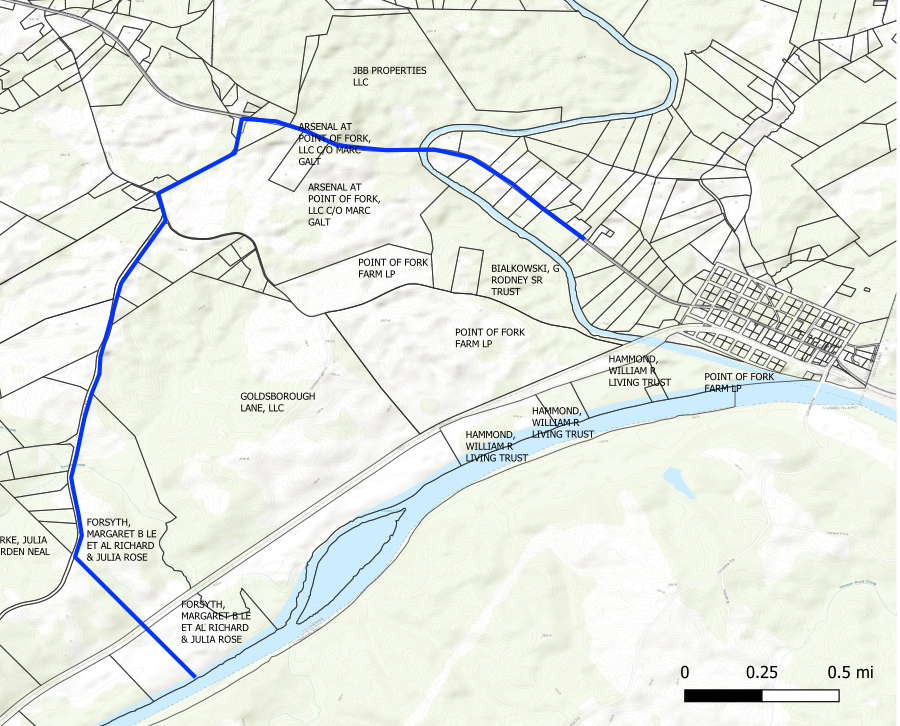
the Monacan proposed a pipeline from the Forsyth property (blue) to intercept the line proposed by the James River Water Authority
Source: Cultural Heritage Partners, Forsyth Alternative for James River Water Authority Project
The National Trust for Historic Preservation listed Rassawek as one of the "11 Most Endangered Historic Places for 2020." The non-government organization asked supporters to write to the Board of Supervisors in both Louisa and Fluvanna counties, requesting the James River Water Authority to choose an alternative location.11
In August 2020, under public pressure, the James River Water Authority requested to Corps of Engineers to suspend work on its permit for the Point of Fork site. It needed time to examine the 1C Forsyth alternative site, over two miles upstream.12
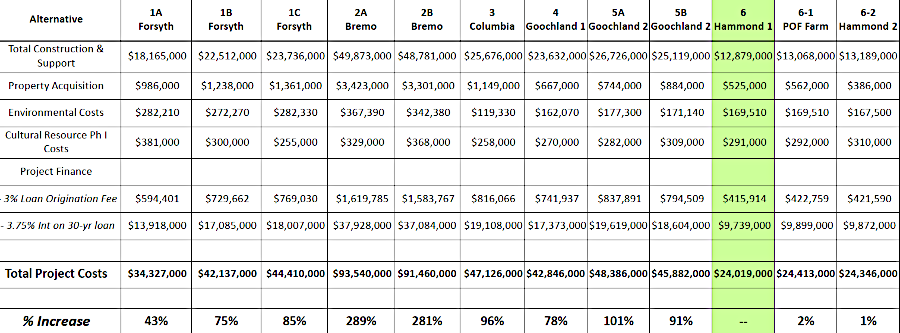
the 1C Forsyth alternative was significantly more expensive
Source: James River Water Authority, JRWA Alternatives Analysis Presentation
The Monacan Nation then committed to support the 1C Forsyth Alternative, even if archeological resources there would be impacted, promising to:13
The James River Water Authority hired the tribe's preferred cultural resources consultant. Archeological investigation of the alternative site in 2021 revealed few artifacts and low potential for encountering burials. The Louisa County Administrator commented:14
The official decision to abandon the Rassawek site and built at the Forsyth site was made by the James River Water Authority at its March 15, 2022 meeting. An attorney representing the tribe highlighted the significance of the decision:15
In early 2023, the cost of the revised project was estimated to be $35-40 million. The original proposal had been expected to cost $23 million.16
Source: National Geographic, National Trust for Historic Preservation Names Rassawek One of America’s 11 Most Endangered Historic Places
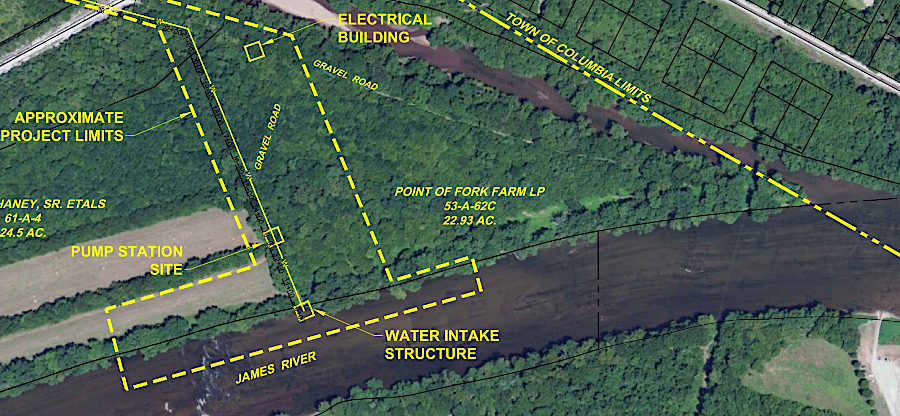
in 2014, the James River Water Authority did not anticipate opposition would force a change in the preferred location for withdrawing water from the James River
Source: James River Water Authority, DEQ Permit Application Notification - Sept 16, 2014
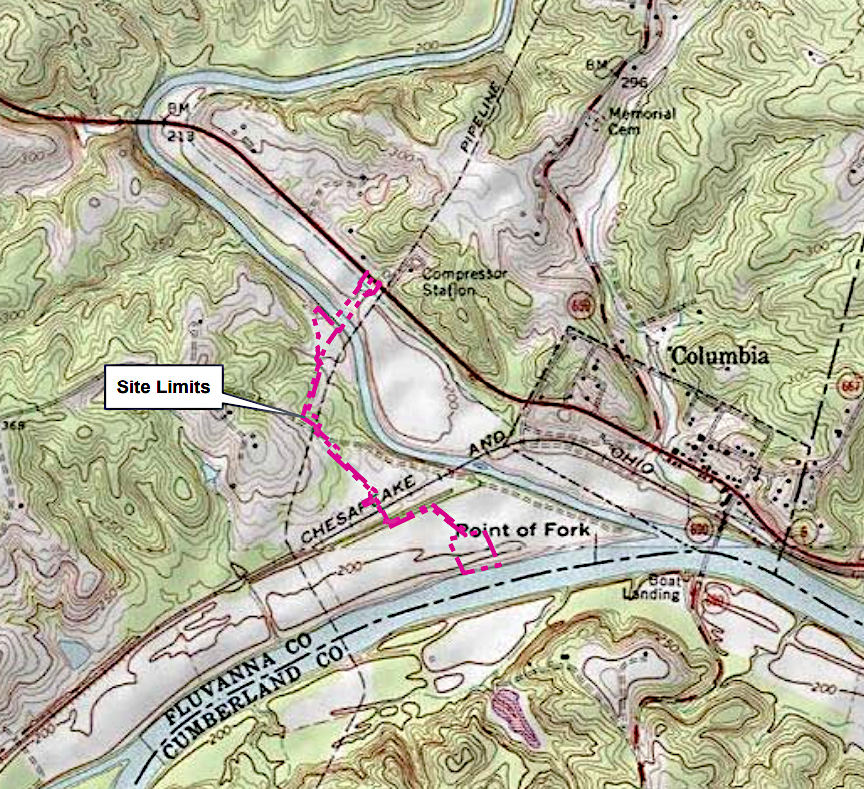
James River Water Authority needed a permit from the US Army Corps of Engineers, since the proposed pump station would impact Waters of the United States
Source: James River Water Authority, USGS for Public Notice - NAO-2014-00708